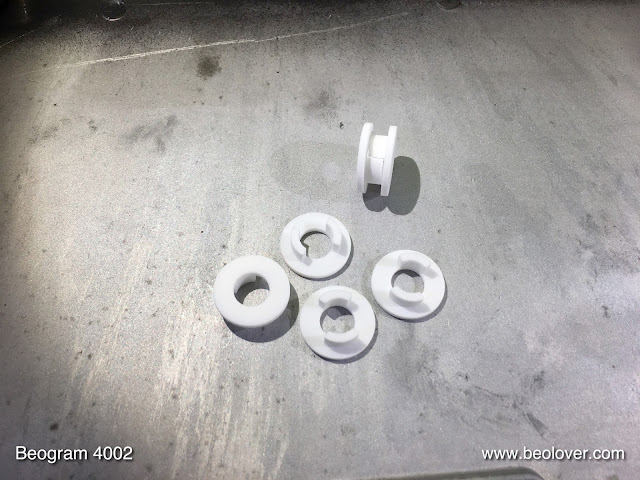I continued working on the Beogram 4004 from Pennsylvania with the 1985 platter motor implant. While struggling to get the motor to run properly, I replaced the transport locks while I had the PCB out. This Beogram had the orange type bushings installed in the transport locks, and they are usually brittle and often come apart during shipping. Telltale signs are orange-brown splinters distributed around the enclosure, like here next to the transport lock on the right side of the enclosure:
In DC motor Beograms the replacement process is fairly painless, since the floating chassis can easily be removed as there are no soldered wires connected to it. All that is needed is to take the main PCB out, unplug the remaining plugs, and remove the transport lock assemblies. This shows the above assembly without the top plate of the lock:
After removing the other two locks, the chassis came out:
At that point I vacuumed the enclosure, since the splinters of the lock bushings have a tendency to block the floating chassis from floating since they like to accumulate in the space between the chassis and the enclosure.
Then I removed the bushings from the chassis:
and inserted the new 3D printed bushings:
They are printed as two-part assemblies that they can be inserted easily (like all featured Beolover parts, these bushings are available. Just send an email or use the contact form on the right if you need some). I installed them into all three locks: First one half is inserted from the bottom
and then the other from the top:
Then it was time to put the chassis back in:
and bolt the locks back together:
This Beogram can be shipped again!






















































